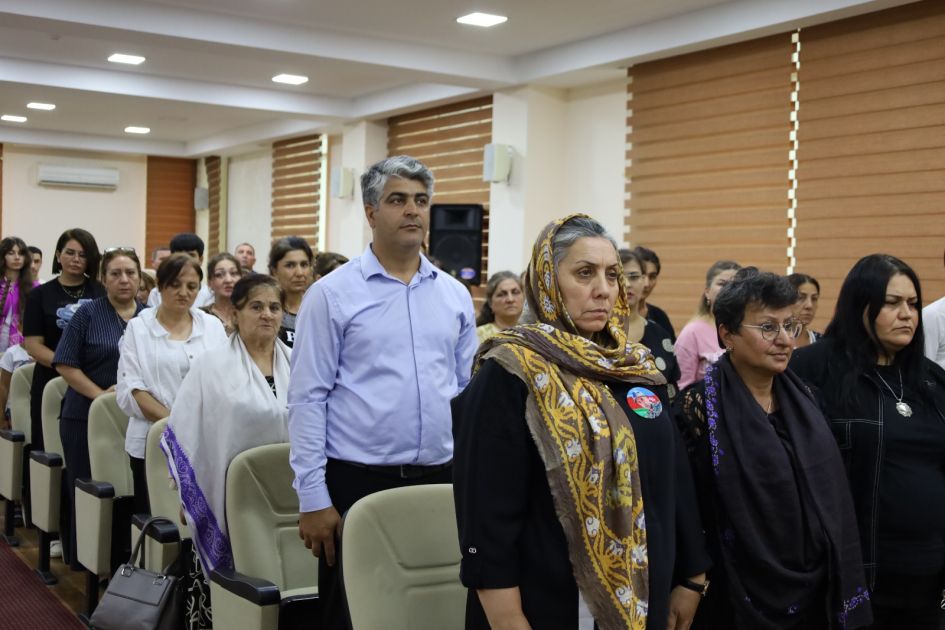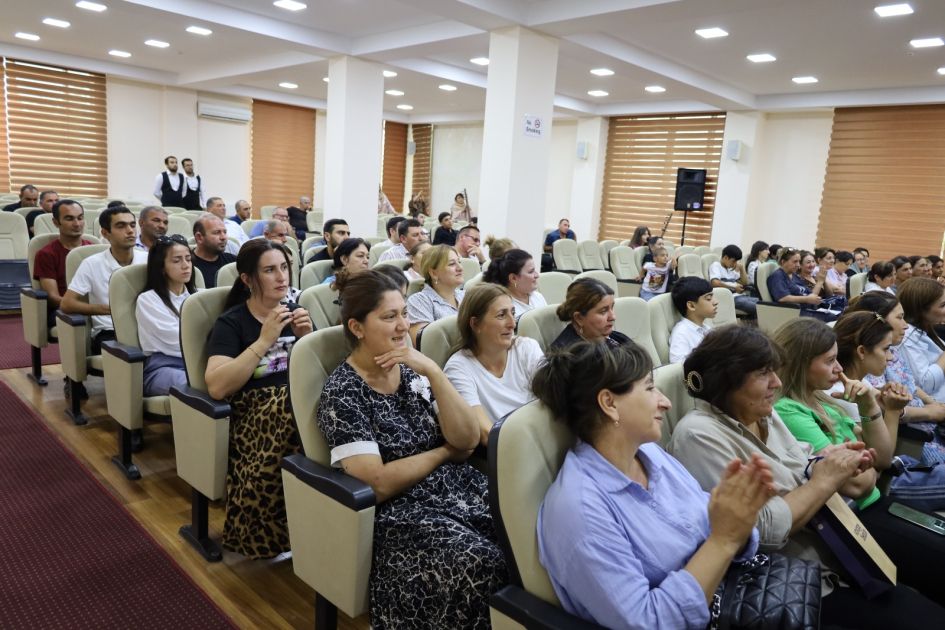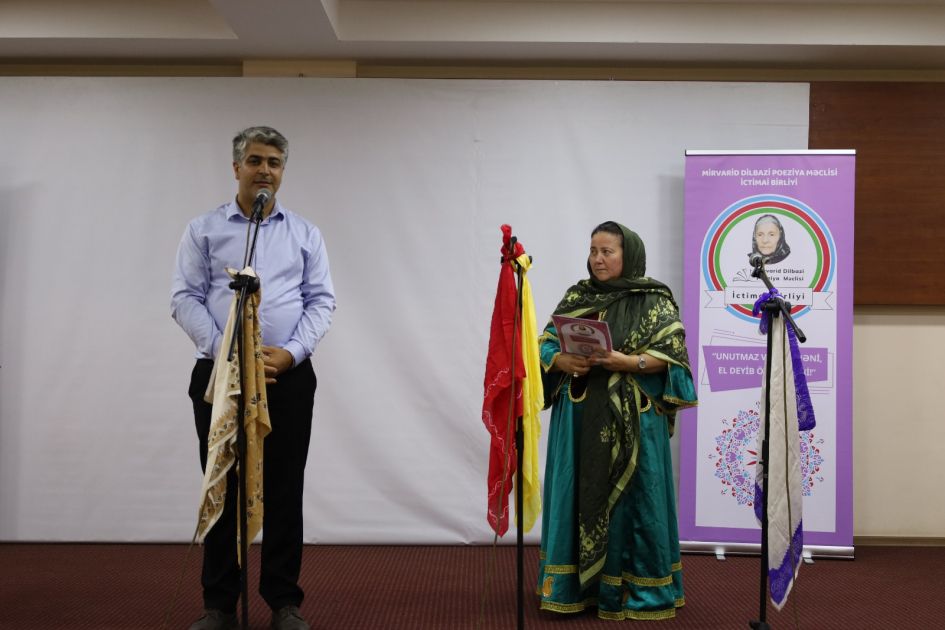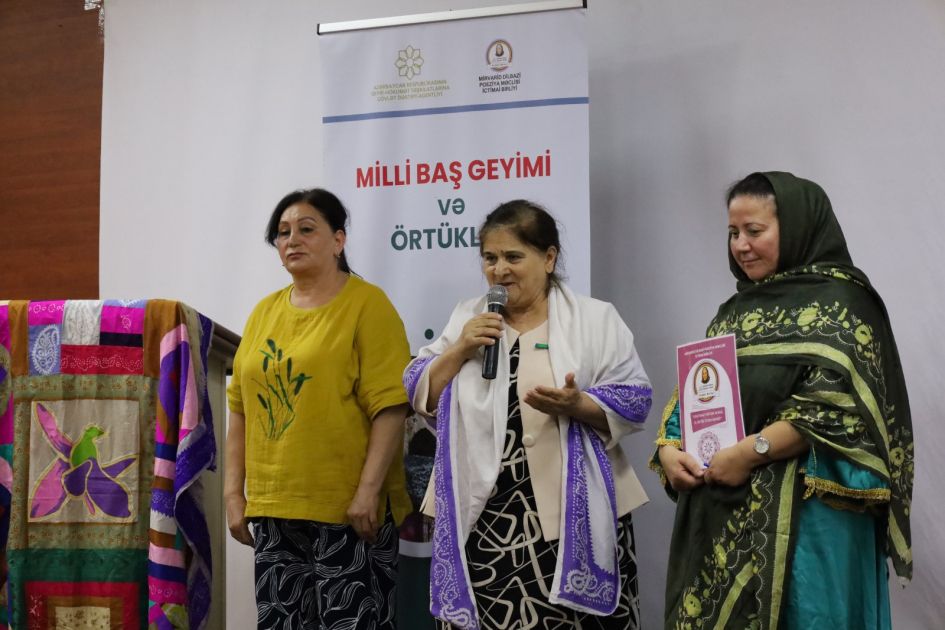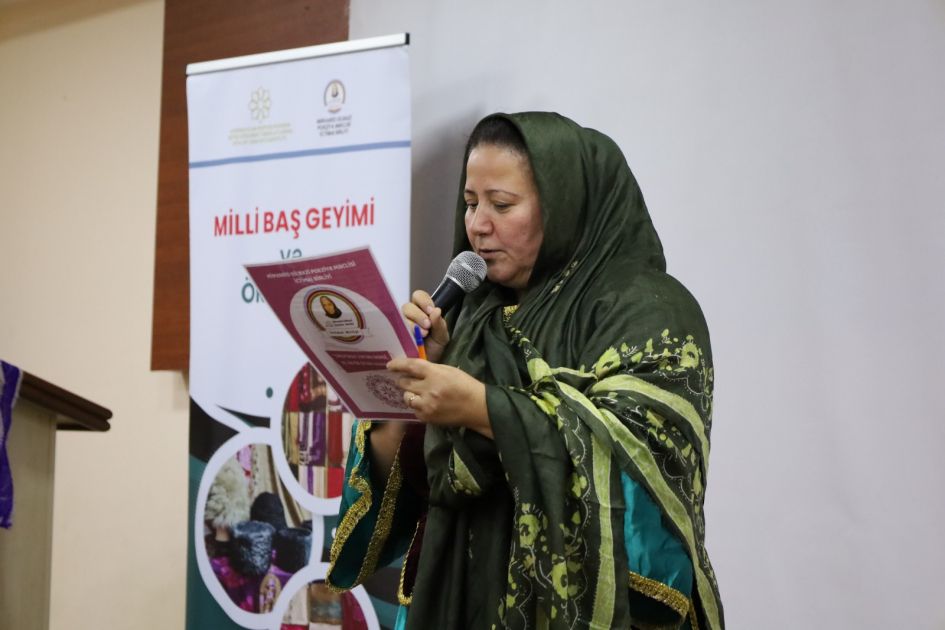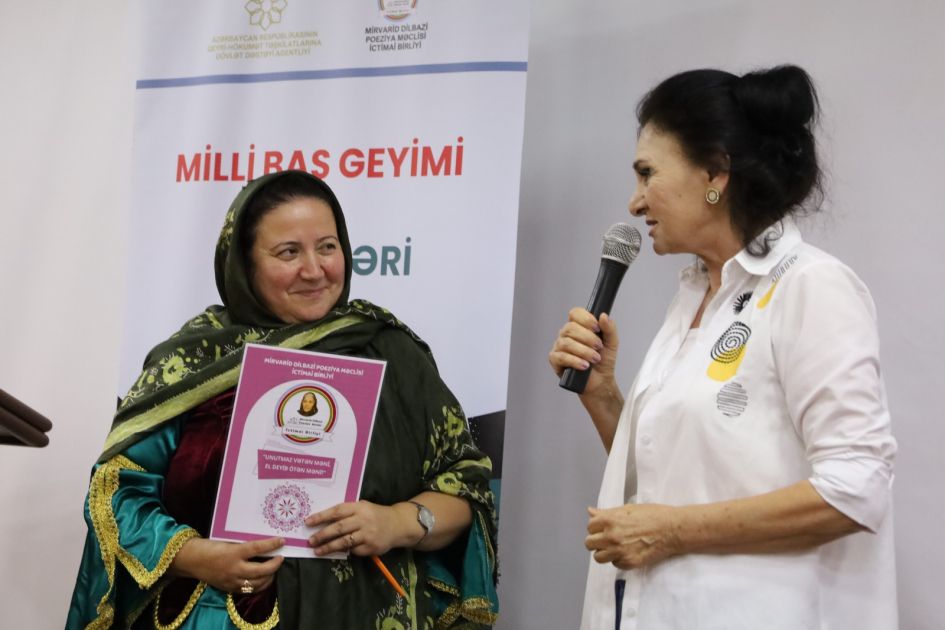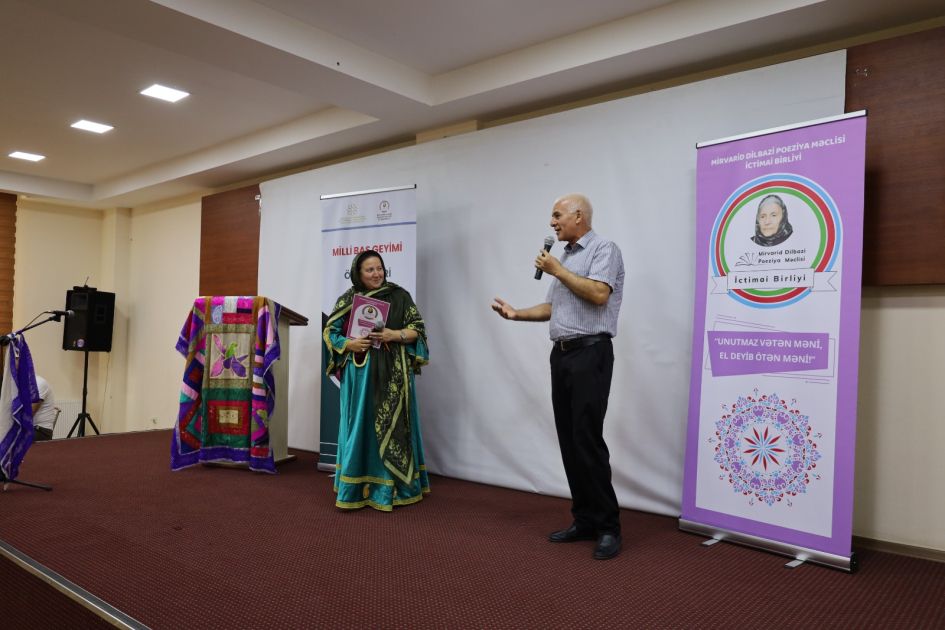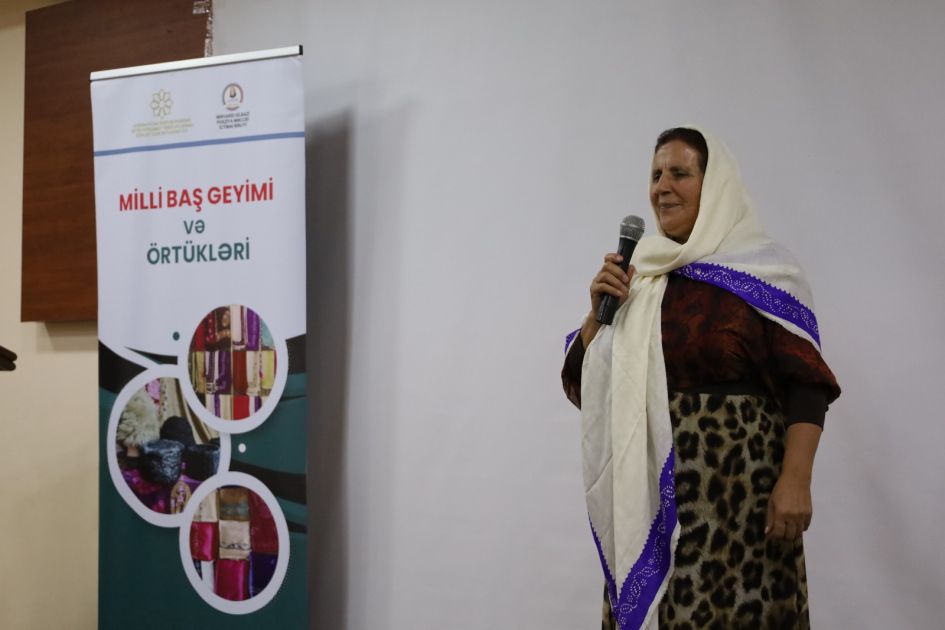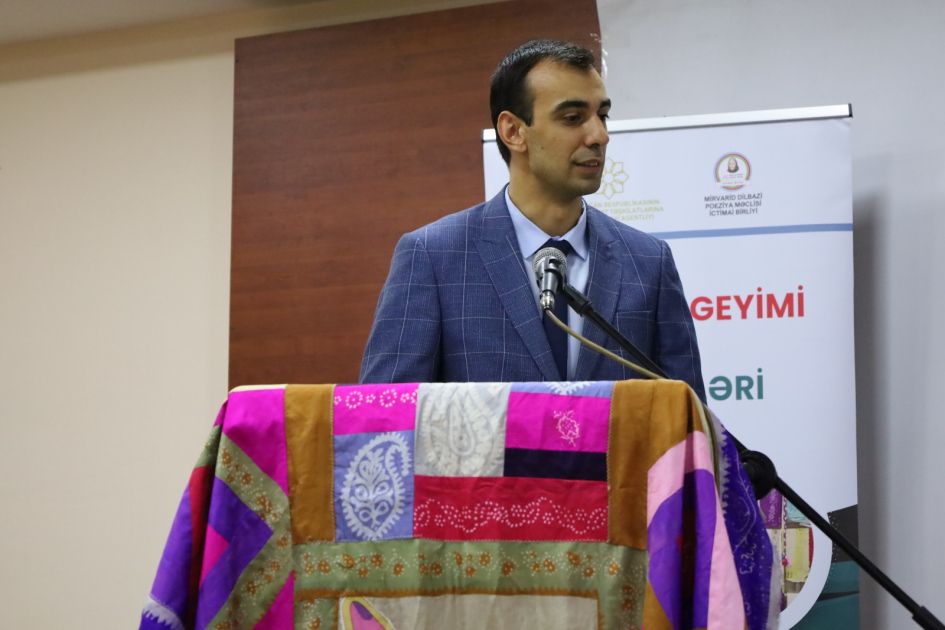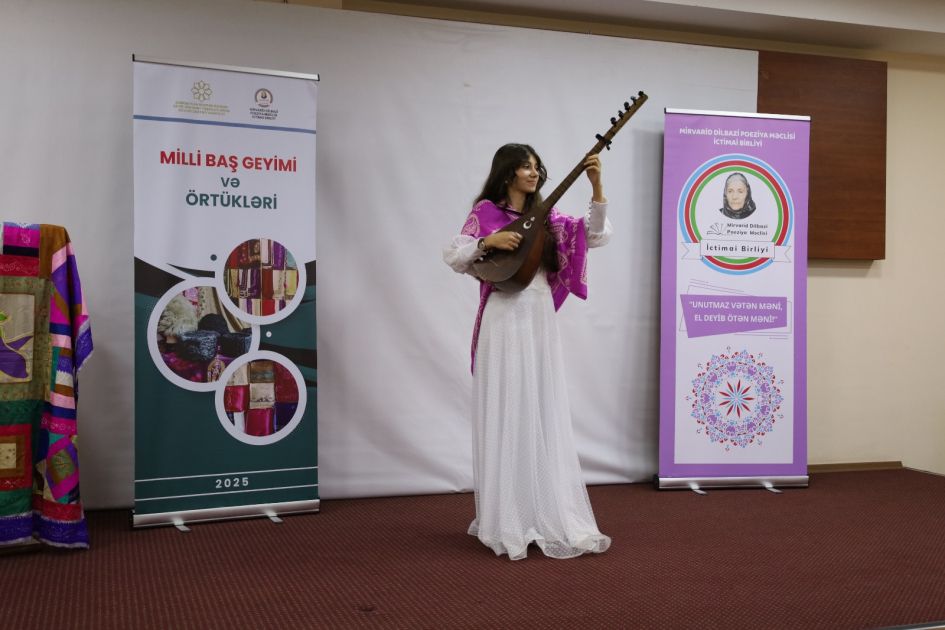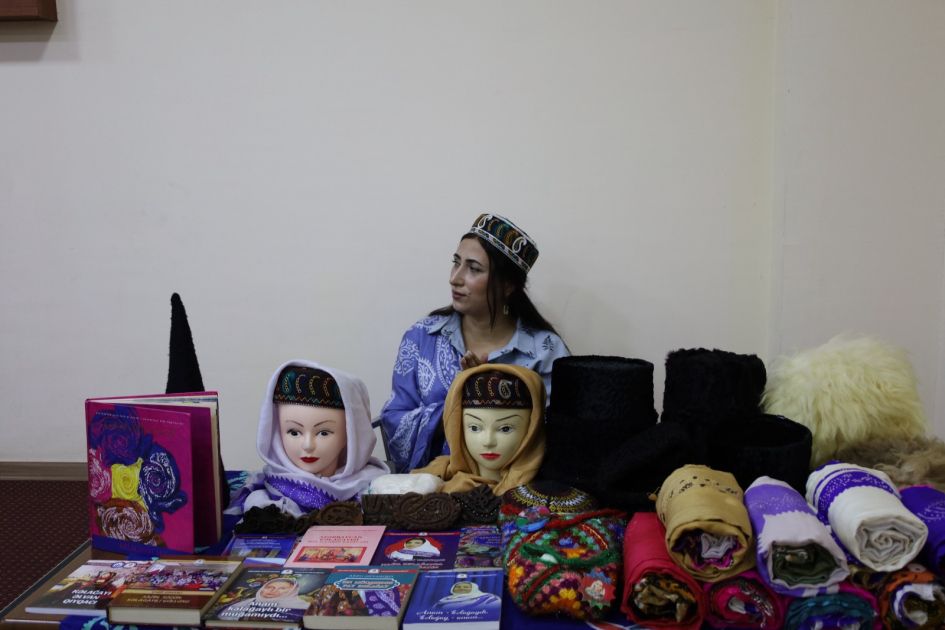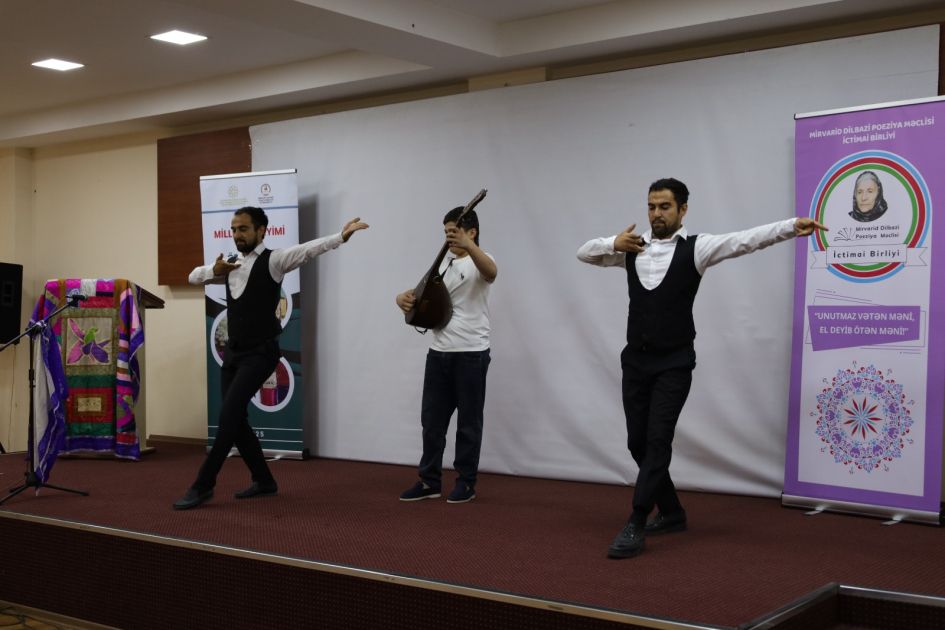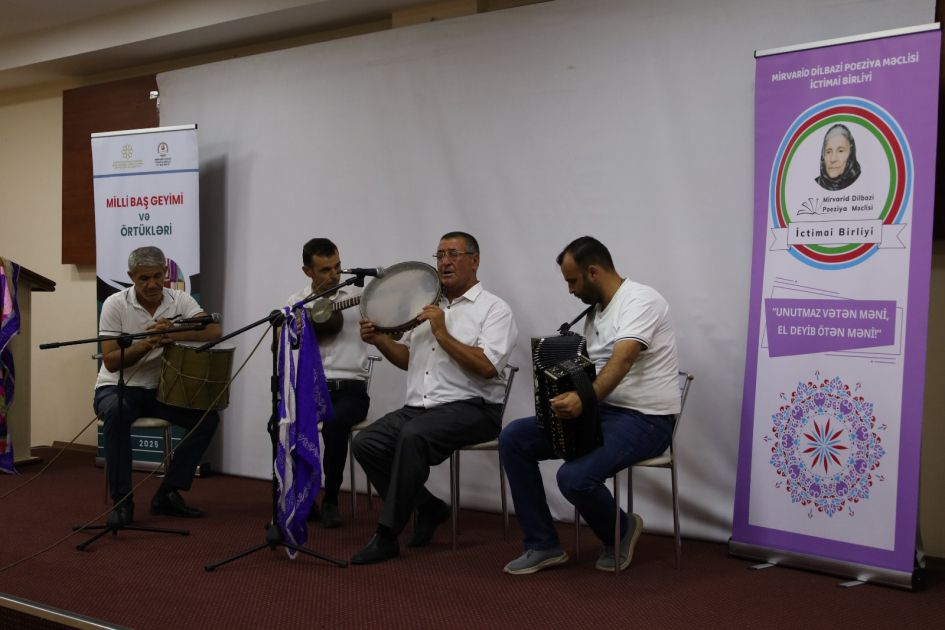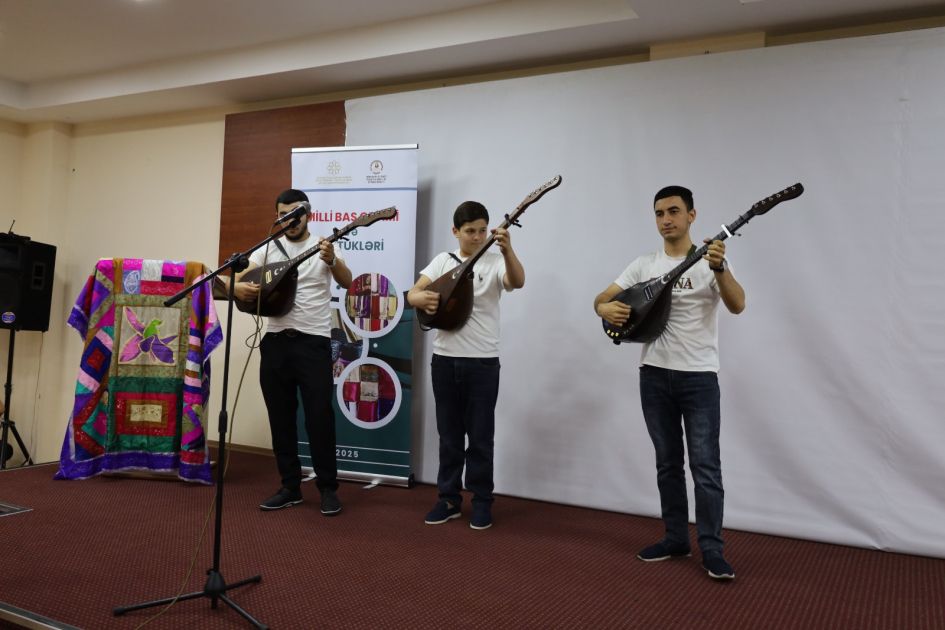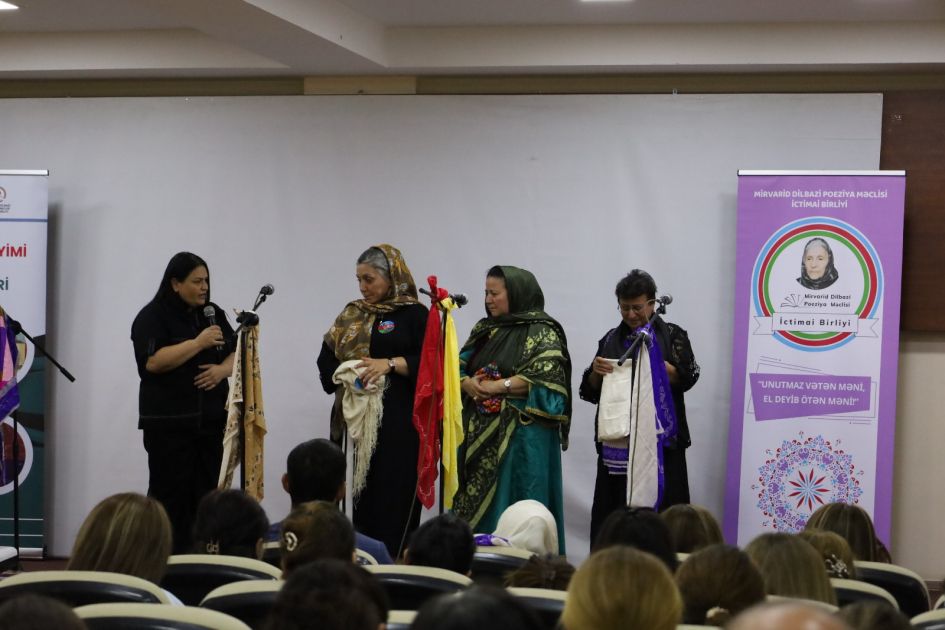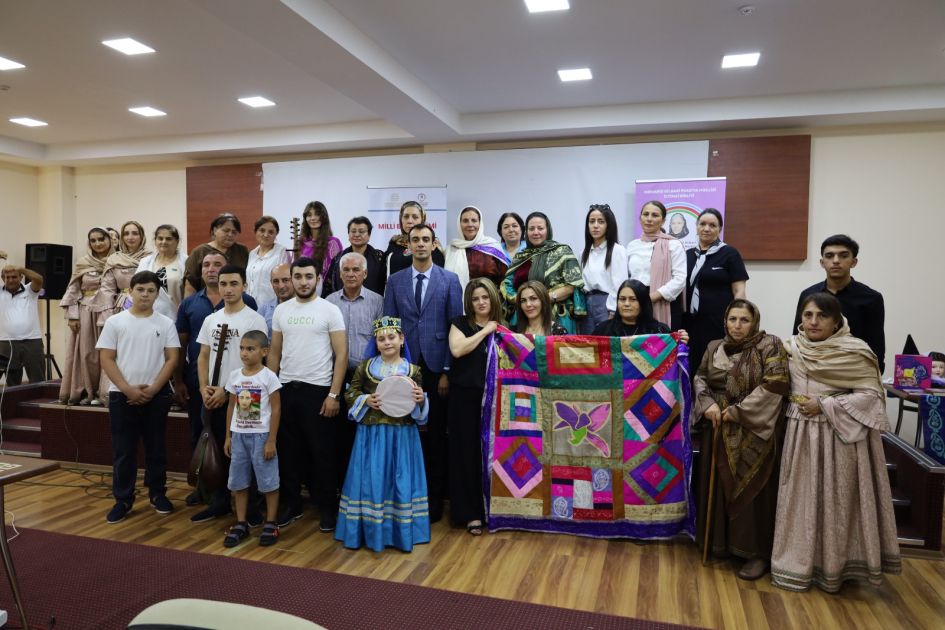Mirvarid Dilbazi Poetry Assembly holds informative session on national headwears [PHOTOS]
![Mirvarid Dilbazi Poetry Assembly holds informative session on national headwears [PHOTOS]](https://www.azernews.az/media/2025/08/15/erfrertgtr9.jpg)
Another educational and cultural event of the project "National Headwear and Coverings," implemented by the Mirvarid Dilbazi Poetry Assembly Public Union, has taken place in Saatli Youth House, Azernews reports.
The meeting began with the playing of the National Anthem of Azerbaijan and a moment of silence in memory of the martyrs who sacrificed their lives for the homeland.
The head of the project and chairperson of the Public Union, Gullu Eldar Tomarli, greeted the event participants and provided detailed information about the goals of the project, the work carried out, and future plans.
She highlighted the significance of national headwear such as the kelaghayi, papag, and other traditional coverings in the rich culture of the Azerbaijani people, emphasizing the importance of preserving and promoting this heritage.
At the event, representatives from the district executive authority, including Mirali Mammadov, and mothers of martyrs, including Sevil Huseynova, Solmaz Aliyeva, and Vusala Huseynova spoke about the historical and spiritual value of the tradition of headwear.
They stated that such initiatives greatly contribute to strengthening the national identity awareness among youth.
As part of the event, an exhibition of national headwear and coverings was displayed. Additionally, books published by the Mirvarid Dilbazi Poetry Assembly Public Union on the topic of kelaghayi literature were presented to the visitors.
A musical program added a special charm to the event. At the end, Gullu Eldar Tomarli announced that the next event of the project, which was selected as a winner of the 2025 Small Grant Competition held by the Agency of State Support to NGOs and UN Office in Azerbaijan would be held in the Kurdamir district.
A silk scarf never goes out of fashion. It's the perfect accessory to add grace and charm to any outfit. For Azerbaijani women, the traditional silk headscarf known as kelaghayi has long been an essential part of their wardrobe.
More than just a fashion item, kelaghayi offers protection from the elements, keeping cool in summer and warm in winter thanks to the natural properties of silk.
Kelaghayis come in a wide variety of colors, patterns, and styles, each adding a unique flair to the wearer's look. The most iconic motif used in kelaghayi design is the buta, a flame-shaped, twisted teardrop that symbolizes divine fire, a sacred element in Azerbaijan since ancient times. The scarf’s borders and sometimes the central area (known as khoncha) are adorned with geometric and plant-based (nabati) patterns.
Each region in Azerbaijan has its own distinctive style of kelaghayi. For example, the Shah buta, buta, and khirda buta designs are typical of kelaghayis from Shaki and Basgal.
Beyond its aesthetic appeal, the kelaghayi holds deep cultural significance. There are many rich traditions tied to this exquisite headscarf.
Young unmarried girls typically wore bright-colored kelaghayis shades like yellow, pink, gold, or purple while older women favored darker tones.
As part of engagement customs, once a girl agreed to a proposal, a woman from the groom's family would present her with jewelry wrapped in a red kelaghayi.
During the henna night of a wedding, the bride's head was covered with a kelaghayi before henna was applied to her hands and feet. Grooms and their closest friends also wore kelaghayis around their necks and tied them to the wedding car's mirror as part of the celebration.
One of the most cherished wedding traditions involved gifting trays brought by women attending the ceremony often included a kelaghayi, considered the most precious item. In some regions, this custom still lives on.
Azerbaijan has been renowned as a hub of kelaghayi production for centuries. Cities like Tabriz, Ganja, Shamakhi, Shaki, and Nakhchivan were once famed for producing high-quality silk scarves.
Among them, Basgal, a picturesque village near Shamakhi remains the most celebrated. It is home to the Silk Center and the Kelaghayi Museum, where visitors can explore the history and craftsmanship behind this traditional art form.
Shaki, another major center, was known as the heart of Azerbaijan's silk industry and once housed the world's largest silk factory in the 19th century.
Even today, Basgal continues to produce the most valuable kelaghayis, typically ranging from six to seven exclusive designs.
The creation of a kelaghayi is a highly intricate process, requiring the collaboration of skilled artisans, including tailors, fabric dyers, pattern designers, and ornament artists. Weighing just 125 grams, each scarf takes about two days to dye and decorate.
In modern times, the ancient kelaghayi has found new life in the global fashion scene.
Designers around the world draw inspiration from its vibrant patterns and cultural symbolism. Visitors can admire these stunning silk scarves not only at the Kelaghayi Museum in Basgal but also in national museums across Azerbaijan.
Here we are to serve you with news right now. It does not cost much, but worth your attention.
Choose to support open, independent, quality journalism and subscribe on a monthly basis.
By subscribing to our online newspaper, you can have full digital access to all news, analysis, and much more.
You can also follow AzerNEWS on Twitter @AzerNewsAz or Facebook @AzerNewsNewspaper
Thank you!


